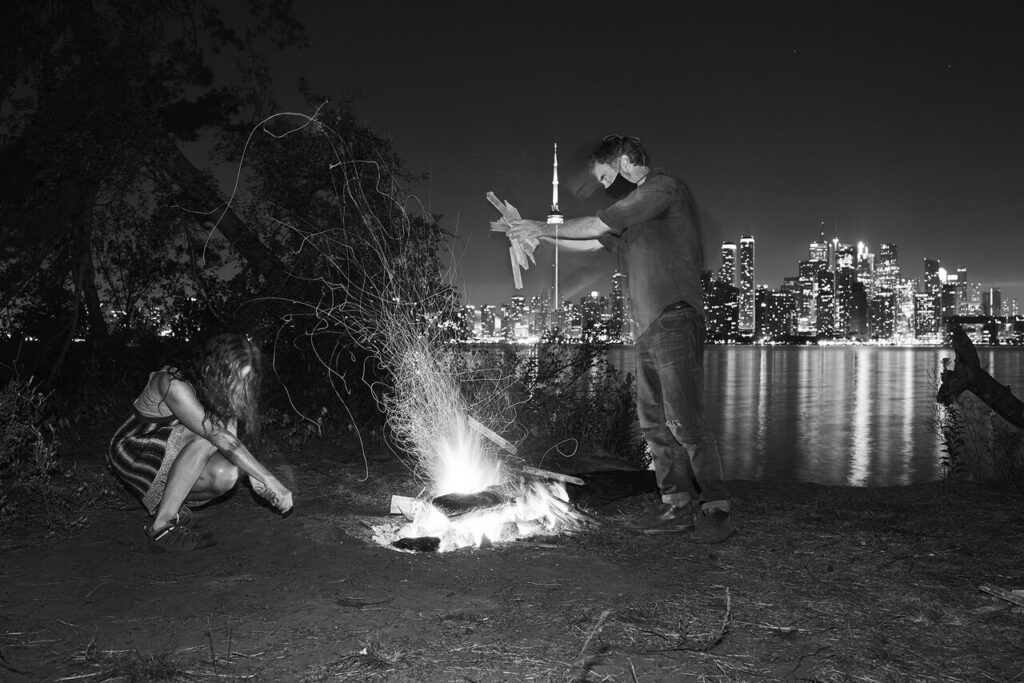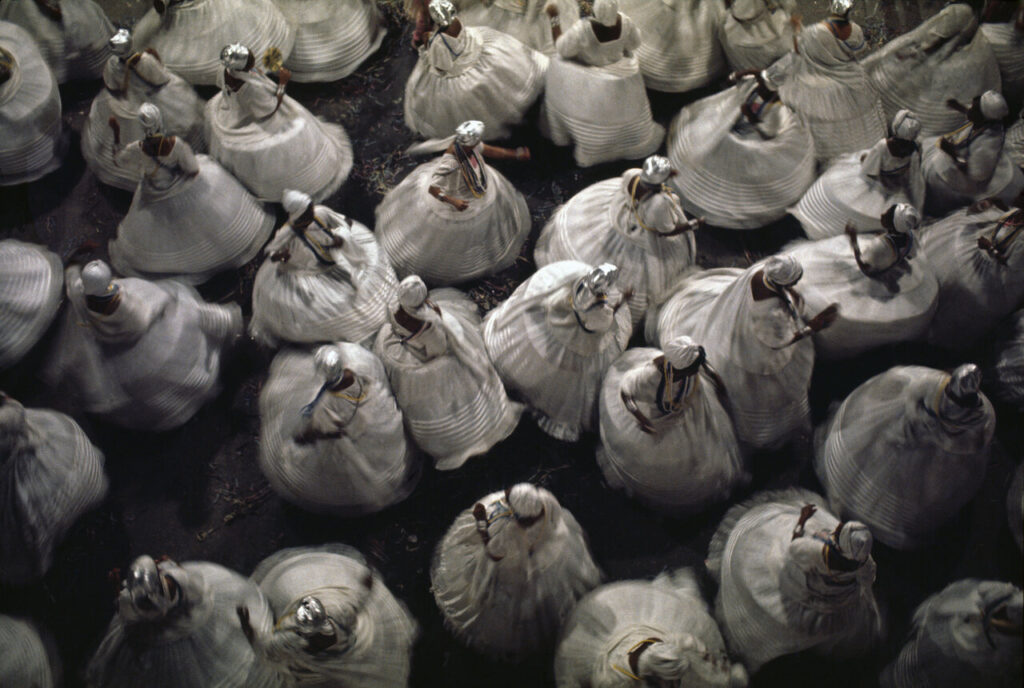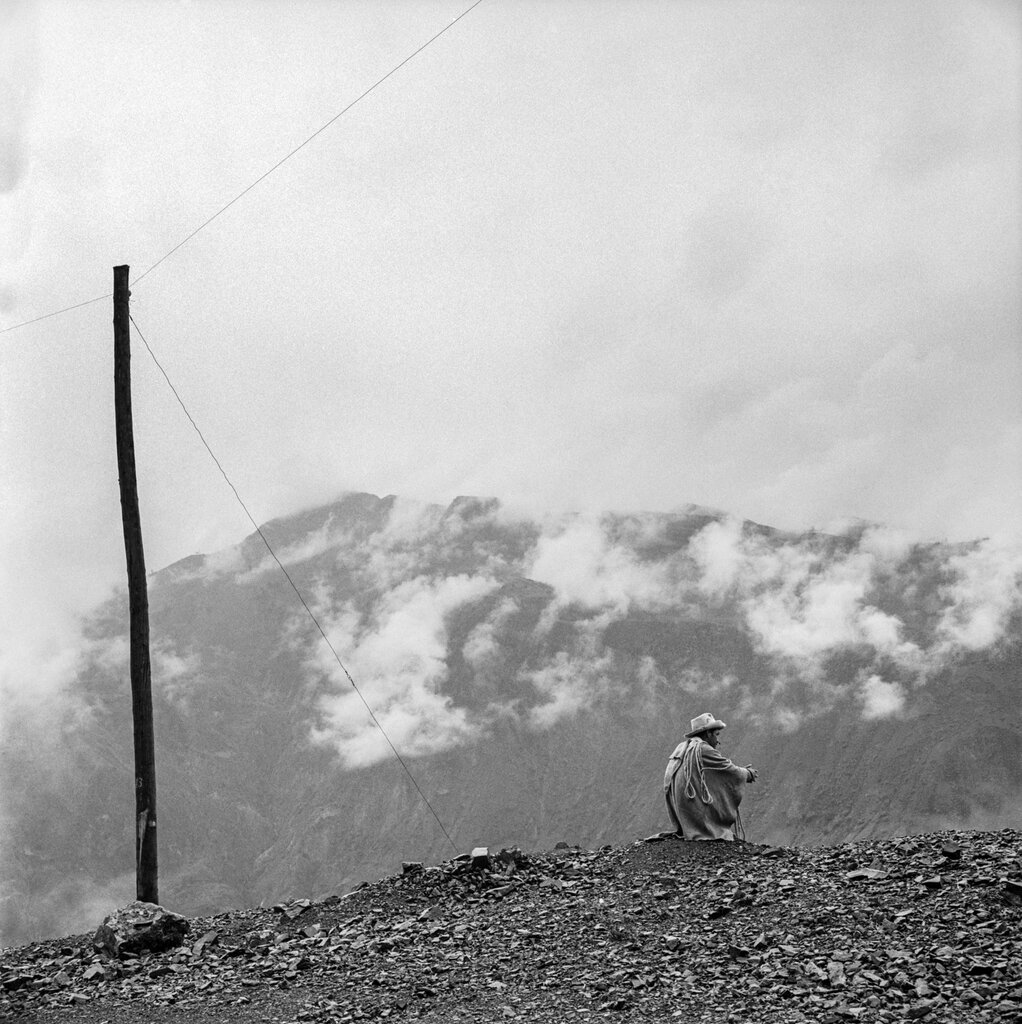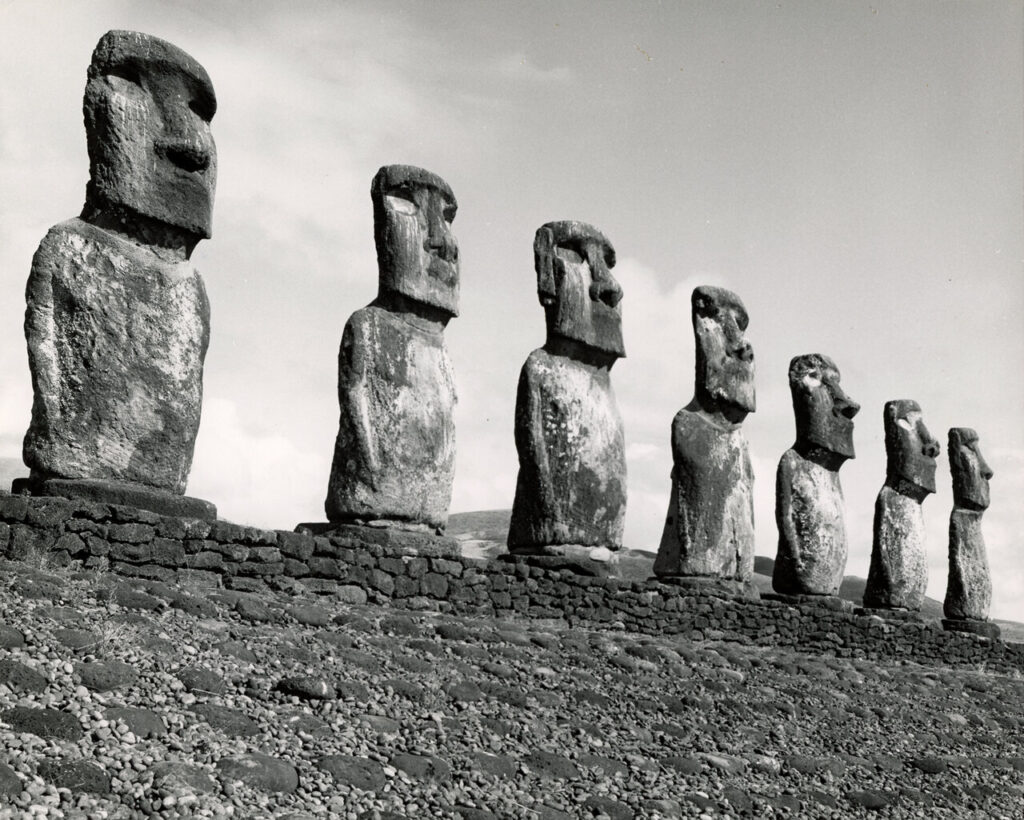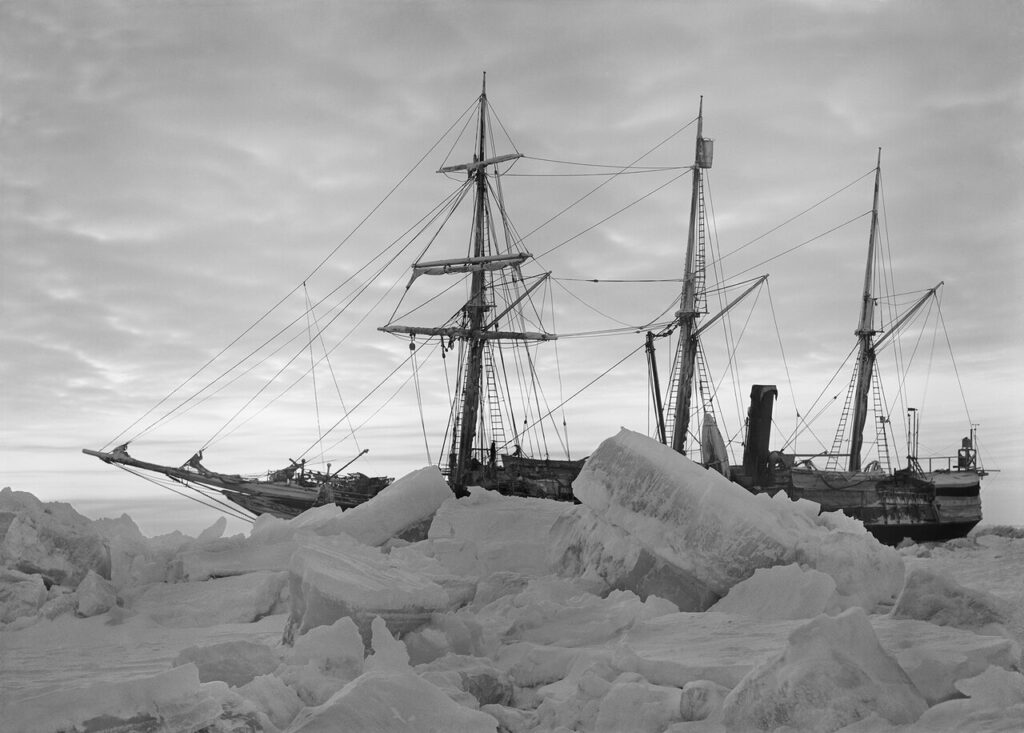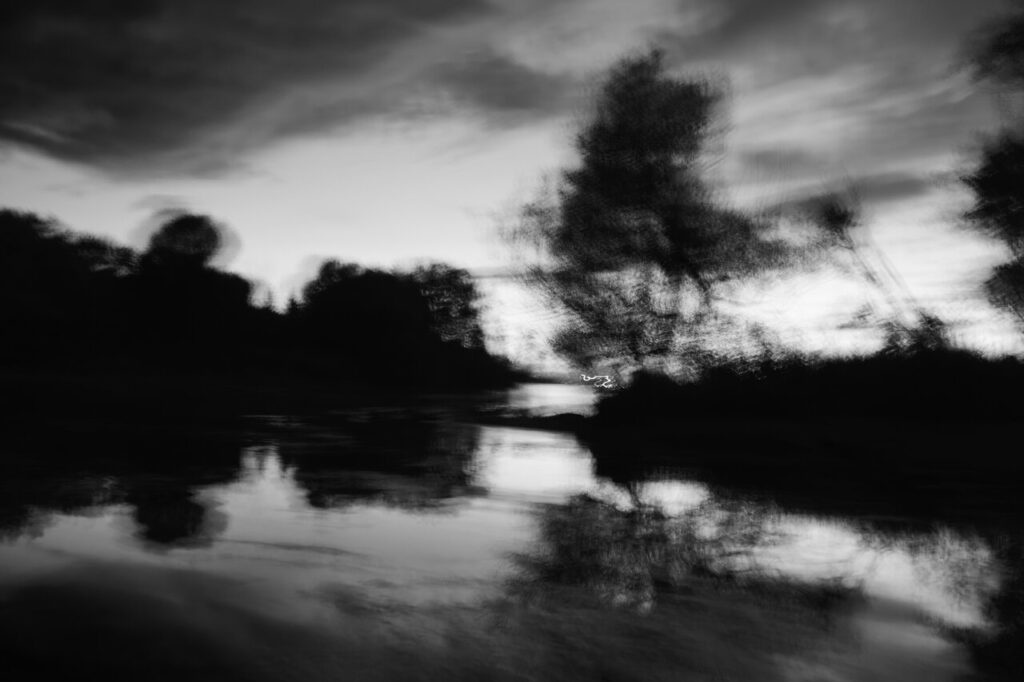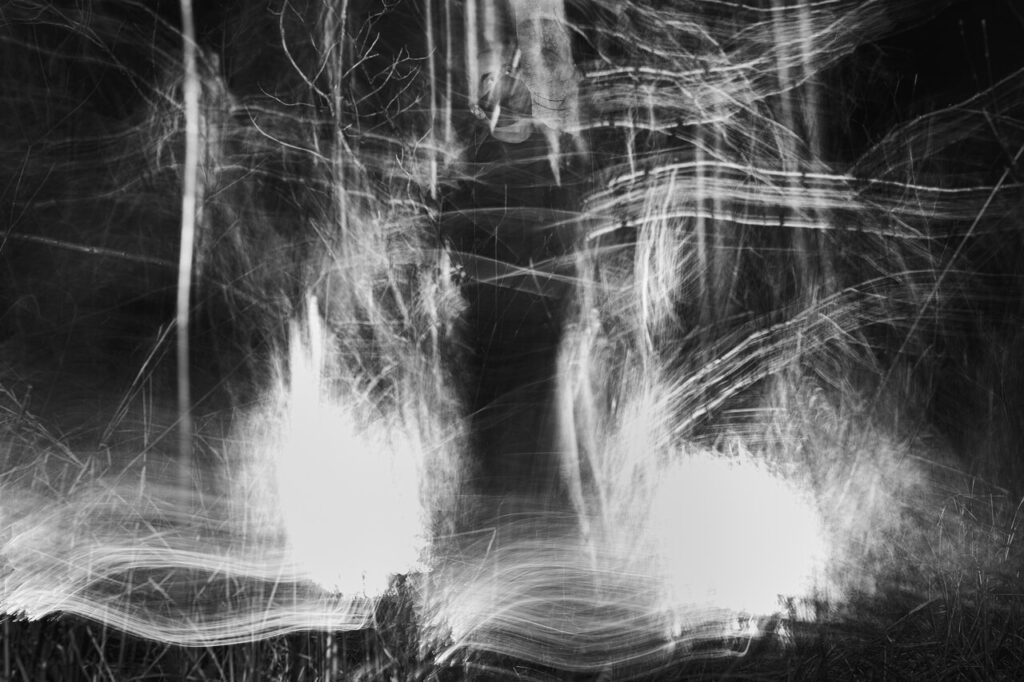Wanderlust: a photographic Journey Around the World
In response to COVID fatigue and the limitations on travel, Stephen Bulger Gallery has put together a show of photographs taken in various corners of the world. It is intended as an antidote to our unsatiated wanderlust. There are eighty photographs. The number is inspired by Jules Verne’s 1872 classic book Around the World in 80 Days. This photographic journey begins in Toronto with a collection of images, from the series of Infinite Distance, created by Rita Leistner and Don McKellar during the first year of the pandemic. After this its circumnavigational route proper is from west to east starting in England, as in Verne’s story about the adventures of a well-to-do gentleman, Phileas Fogg, and his faithful valet Passepartout.
Rita Leistner and Don McKellar, He Stokes The Fire Showering Her With Sparks, From the series of “Infinite Distance”, 2020-2021, 20 x 30 inches
There are too many photographers to list here. Most of the photographs document the people and places travelled to; that is to say, they are journalistic in nature, e.g., Elliott Erwitt’s picture of tango dancers in Helsinki, and Rosalind Fox’s photo of a muzzled bear on a street in Belgrade. Other places recorded include Rio de Janeiro, Uttar Pradesh, Egypt and Peru.
Bruno Barbey, Carnival, Rio de Janeiro, Brazil, 1973, Printed in 2018, Pigment print on archival paper, 15 ¾ x 23 ½ inches
Rosalind Fox Solomon, Telephone Pole, Ancash, Peru, 1980, Gelatin silver print, 15 x 14 ¾ inches
But what is especially fascinating about this collection is that it is equally a record of travel through time as well as space. Some of the pictures date back to the late nineteenth century, only decades after the invention of photography, e.g., Alexander Barton Thom’s The Great Glacier, British Columbia (circa 1897) and pictures of three views of Niagara Falls in winter by an unknown photographer dating from 1870. Others were produced within the last few years.
Photographer Unknown, Three Views of Niagara Falls in Winter, circa 1870, Set of three Albumen prints, each 12 x 16 inches
This temporal dimension to the exhibition may not be its principal theme but it too reverberates with Jules Verne’s story. It is set at the time of these earliest photographs in the show. Indeed, it is of course a tale focused on the transformation of our world from that of remote exotic places to one that can be travelled across in a matter of days, in virtue of emerging mechanized technologies, and that includes photography itself.
Early photographs were costly to produce, much as travel was beyond the means of the average citizen. As a result taking a photograph was a deliberate, thought-out process – in contrast to the casual nature of most photograph-taking today – and so tended to emulate painting. Once it became affordable photographers began to move around the rapidly shrinking globe to record these diminishingly exotic locales and peoples, in a sort of race against time. Ironically, it is their pictures which are in part responsible for this loss of aura, the diminishing exoticism. We see the results in the works in this show by, for example, Richard Harrington (1911-2005), Minna Keene (1861-1943) and Frank Hurley (1885-1962), to cite a few. Now we are all too familiar with some of the places they recorded, namely Easter Island, South Africa and Antarctica respectively.
Richard Harrington, Untitled [Chile Easter Island], circa 1974, Gelatin silver print, 7 ¾ x 9 ¾ inches
Frank Hurley, Antarctic Dawn, 1914-1917, Gelatin silver print, 16 x 20 inches
One thing Verne’s story highlights is that modern mechanized travel around the world involves, for the most part, passing through everywhere – ‘passe partout’. Like a fish slipping through a net, we are not captured by the places we visit, not inconvenienced by their landscapes and strange cultures. Instead, we rush by, ultimately on our way back home. Many of these photographers have, conversely, attempted to capture these things, rather than be captured by them. What distinguishes them from mere tourists taking snapshots is their very effort to trap the essence of the places and peoples they encounter. The best of these photos, in trying to capture this essence, heighten the sense of the world as ephemeral – always just out of reach.
In this respect I see Leistner’s and McKellar’s pictures as marking the end of this journey, rather than its beginning. They are the most recent works in the show. These exquisite images aim to re-enchant the world, to bring photography back in full circle, by imbuing it with a painterliness, as suggested by some of the titles, e.g., After Friedrich (Caspar David) and After Sebastianus Patron Saint of the Plagues (a subject once popular with painters). The works are not attempts to capture and subdue the ephemeral, but instead to celebrate it.
Rita Leistner and Don McKellar, After Friedrich, From the series of “Infinite Distance”, 2020-2021, 12 x 18 inches
Rita Leistner and Don McKellar, After Sebastianus Patron Saint Of Plagues, From the series of “Infinite Distance”, 2020-2021, 12 x 18 inches
Leistner and McKellar create a Tempest-like world, an exotic place of the imagination. In Shakespeare’s day this was the newly discovered Americas (even though in the Tempest the island the protagonists are marooned on is supposed to be in the Mediterranean). For Leistner and McKellar the setting is their own backyard – various locations on the urban fringes of Toronto at night. No purpose in racing around the world – more about wonder than wandering. Theirs is a magical world of light, where material things fall away. All told, the exhibition takes you on a wonderful photographic adventure.
Hugh Alcock
Images are courtesy of Stephen Bulger Gallery
*Exhibition information: WANDERLUST, Around the World in 80 Days, January 23 – February 26, 2022, Stephen Bulger Gallery, 1356 Dundas Street West, Toronto. Gallery hours: Tue – Sat 11 am – 6 pm.

